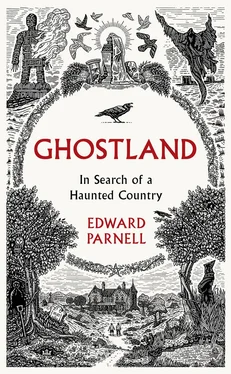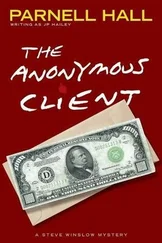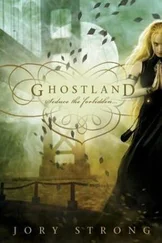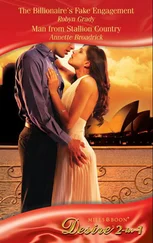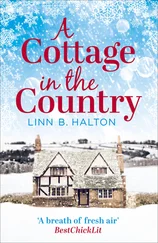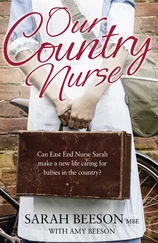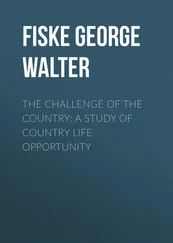¶You had to press a button on the top of the phone before making a call, and check that the house across the lane wasn’t on the line at the same time. To me as a sophisticated town-dweller this ‘party line’ seemed hilariously primitive.
**Brooke won a scholarship to study at King’s College, Cambridge in 1906, a year after M. R. James became its provost. Brooke’s death in 1915 was not the result of a bullet fired by a German sniper, but from sepsis caused by an infected mosquito bite while the naively patriotic twenty-seven-year-old waited to see action with the Royal Navy. James spoke warmly about Brooke in that year’s Vice-Chancellor’s oration, his words echoing those he had earlier written about James McBryde. ‘No one, I think, must call that short life a tragedy which was so fully lived, and spent itself so generously upon all who came in contact with it.’
†† Rewards and Fairies is also notable for containing the first appearance of Kipling’s most famous and popular poem ‘If—’, which topped the survey of Britain’s favourites; ‘The Way through the Woods’ came forty-eighth.
‡‡Terry’s last theatre role – in 1925, a little less than three years before her death at the age of eighty-one – happened to be a non-speaking performance as the ghost of Miss Susan Wildersham in Walter de la Mare’s now-obscure ‘fairy play’ Crossings .
§§The youngsters have, I think, something about them of the playful shyness of Tolly’s elusive Restoration ancestors in The Children of Green Knowe .
¶¶Kipling would also go on to lose his son prematurely. Eighteen-year-old John was shot in the head at the end of September 1915, while serving in France; the boy’s poor eyesight would have rendered him ineligible for active service, but he persuaded his father to pull strings to get him enlisted in the Irish Guards. Two days before his death, knowing he was about to be sent to the front, John wrote home: ‘This will be my last letter most likely for some time.’
Chapter 4
THE ROARING OF THE FOREST
A coil of movement down by the path. It’s not easy to pick out, as the leaf-heavy branches of an ancient oak cast the forest floor in shadow, but something is there. Something flesh and blood.
‘A snake,’ whispers my brother to my dad.
‘Don’t get too near, just in case.’
And now it becomes apparent not merely that this is a solitary two-and-a-half-foot grass snake, but that its mouth is crudely clamped around a shape – the back of a still-moving frog – which is gulping and blinking with a resigned calmness as the reptile stretches its jaw the final inch and envelops the amphibian’s head. Saliva bubbles from the taut corners of the snake’s mouth, and the frog lets out a high-pitched squeak.
I imagine this is roughly how it happened, because I was not a first-hand witness to this demonstration of nature’s brutality, but was playing a few hundred yards away with Mum in a New Forest car park as my dad and brother made their discovery. On their return, though, my jealousy was palpable – I’d never even seen a live snake in the English countryside before, let alone one performing a gruesome act resembling something from Life on Earth . We all set back out together into the hazy greenness of the late-summer woods, only to find the Eden beneath the oak empty, the unseen serpent watching us through the undergrowth.
The day before, we’d arrived at the end of a narrow track where our bed-and-breakfast was located – a two-storey cottage hung with weather-bleached deer skulls – just as an enormous pig was ambling around the dusty yard. In my memory, the setting came to resemble something out of an American horror film like The Evil Dead , though I supposed I’d accorded it a far more backwoods-gothic atmosphere than the reality until years later when my brother and I stumbled upon the place, its brickwork unchanged and still antler-ridden, as we searched for rare honey buzzards in the forest’s depths. I’ve been obsessed with these wasp-eating raptors – special feathering on their head helps safeguard them from stings – from the moment a pair I never managed to witness was rumoured to be nesting in a wood close to Nan’s house in Norfolk. At the time it was a species I had yet to see anywhere, but the birds – if they ever existed at all – eluded me for the fortnight I was there, despite a handful of spurious half-sightings that I tried to convince myself might be the real thing.
If the exterior of this lonely farm cottage was somewhat off-putting, then the inside was worse: ramshackle and dirty, so that Dad took the anarchic step of piling us straight back into the car and doing a flit, driving to the tourist office in Lyndhurst where alternative accommodation was found. The new guest house was better in the eyes of my parents – no dead trophy animals at least – but in my opinion (with which my brother agreed) it was spookier. The out-of-time bedroom the two of us shared was inhabited by three antique china dolls; Chris had to get up and twist them towards the wall, because we both found them menacing. It didn’t help that our bedtime reading included Chris’s newly purchased copy of Raymond Briggs’ nuclear Armageddon parable When the Wind Blows , or that it was stiflingly hot – the whole 1983 holiday, which had encompassed a grand tour of England’s south-west, was sun-baked, everywhere the grass dying and brown, like Leo’s fateful summer in The Go-Between . At regular intervals my brother called out ‘cold pillow’, an instruction to turn over our head supports in an attempt to claim temporary relief from the oppressiveness, and an opportunity to check that the staring dolls were still facing the other way. The landlady was frightening too, an old woman with bleached hair and excessive make-up – she had something of the artificial appearance of a porcelain figurine herself – who, my parents joked, looked like Bette Davis in What Ever Happened to Baby Jane?
I had no idea who they were talking about, though I would have if they’d namechecked The Watcher in the Woods . I’d seen this Disney children’s horror film – set in England, it was filmed largely at Pinewood Studios and in the surrounding Buckinghamshire countryside – the previous year with two of my classmates. To my shame, that night after the cinema I’d had trouble sleeping. My companions felt the same, I was relieved to learn, as we joked with daylight bravado about the movie at school the following Monday, having had the whole weekend to muse over it. The main source of our thankfully short-lived terror did not stem from Bette Davis’s creepy performance, but from the film’s copious use of tracking shots through the branches, captured from the voyeuristic perspective of the watcher and accompanied by a dramatic, jarring orchestral score. As my friends and I watched the film in our local Odeon – a building that was to close soon after, looming empty and abandoned for the next four years like the ominous pavilion in Carnival of Souls – we were left with a genuine fear that something malevolent was in the trees, unobserved yet observing us.
Like that frog-swallowing snake I would later fail to find.
The name ‘New Forest’ is something of a misnomer, as it is clearly anything but new, and large swathes of it consist of wide-open gorse- and heather-filled heathland, rather than the dense fairy-tale forest that is my landscape of memory from that family holiday. The region’s poor soils have supported this mixture of lowland heath and woodland since well before 1079, when William the Conqueror declared the area to be his Nova Foresta , a stretch of land reserved for the pursuit of deer and wild boar by the monarch (the original meaning of the word ‘forest’ is hunting ground, and maiming physical punishments were meted out to commoners caught breaking the rules).
Читать дальше
